Please see the updated Montana voter guide, as incumbent Democrat Gov. Steve Bullock completed the survey after this original guide was published.
Washington, Oct. 12 – As voters get ready to head to the polls in Montana, RespectAbility is releasing its Montana Disability Voter Guide. Republican Greg Gianforte is challenging incumbent Gov. Steve Bullock to represent the state. Gianforte, as well as presidential candidate Hillary Clinton, has responded to the #PwDsVote Disability Campaign Questionnaire for people with disabilities. Bullock has yet to submit a response.
The #PwDsVote 2016 Campaign Questionnaires were designed by and for people with disabilities (PwDs) and those who love them to know where candidates stand on key issues. RespectAbility is nonpartisan and does not endorse candidates. The questionnaires are purely for educational purposes as voters go to the polls.
The presidential questionnaire was created during the primary season and asked all of the presidential candidates to comment on 16 disability questions. Former Secretary of State Hillary Clinton responded by addressing all of the questions. Despite numerous requests in person and by phone and email, the Trump campaign has not yet filled out the questionnaire. The American Association of People with Disabilities and the National Council on Independent Living also has a nonpartisan presidential questionnaire, which both Clinton and Trump have completed. Libertarian Gary Johnson and Green Party candidate Jill Stein have not filled out either questionnaire.
The down-ballot survey was adapted from the presidential questionnaire to ask gubernatorial candidates 16 questions and senatorial candidates 17 questions. All answers are posted verbatim and in full on The RespectAbility Report, a publication that covers the intersection of disability and politics.
In responding to the questionnaire, challenger Greg Gianforte has enabled the 69,927 Montanans with disabilities who are between the ages of 18-64 a chance to get to know his views on a variety of disability-related issues.
While Montana has made strides in recent years, the state can still do even better in terms of competitive, integrated employment for people with disabilities. While 40.5 percent of working-age Montanans with disabilities are employed, other states have had success in employing upwards of 50 percent of persons with disabilities. Moreover, there is a 37.3 point gap between the labor force participation rate of Montanans with disabilities and those without disabilities. In order for outcomes to improve for people with disabilities, Montana’s voters need to be informed on the candidates and where they stand on issues
While Gianforte did not answer each question individually, he sent a letter addressing several of the issues brought up in the questionnaire including employment and education.
“I believe that the goal in education should be to help every child reach their full potential,” Gianforte said. “For students with disabilities, they need to be taught valuable skills just like anyone else. This is the great thing about technology, and why one of my primary goals is to get computer science into every high school.”
Fully one-out-of-five voters have a disability, and 52 percent of likely voters have a loved one with a disability. Only 34 percent of working-age Americans with disabilities have jobs, despite the fact that the vast majority want to work. More than 11 million working age people with disabilities are now living on government benefits in our country.
RespectAbility President Jennifer Laszlo Mizrahi said, “Montana’s voters with disabilities are looking for jobs so they can achieve the American dream, just like anyone else. It is vital for them to know where the candidates stand on the disability aspects of economic, stigma, education, safety, transportation, housing, healthcare, foreign affairs, criminal justice and other issues. Many candidates have hugely different ideas about how to deal with the issues. Thus, it’s extremely important to read their full answers so you can understand their vast differences, and to understand that all candidates were given an equal opportunity to respond and some chose not to participate yet.”
Montana Needs to Improve Outcomes for Citizens With Disabilities
There are 69,927 Montanans with disabilities who are between the ages of 18-64. Additionally, there are 3,700 Montanans ages 16-20 with disabilities. More than 14,000 Montana students have individual education plans (IEPs). However, many Montanan children with disabilities have not yet received a disability diagnosis they may need, and thus are not yet receiving the school accommodations and supports that they need to complete high school and succeed. They can find themselves trapped into a lifetime of poverty or flowing down the school to prison pipeline.
Today Montana has the opportunity to work hard to improve outcomes and be a leading example to other states in terms of competitive, integrated employment for people with disabilities. Currently 40.5 percent of working-age Montanans with disabilities are employed compared to 77.8 percent of those without disabilities. View the rankings of all 50 states and compare.
Montana has the opportunity to lead by example by including more people with disabilities in the workforce thanks to Workforce Innovation and Opportunity Act (WIOA). Geographically, Montana is in an employment hotspot for people with disabilities. It is bordered by Wyoming and the Dakotas, three states who have some of the highest rates of employment in the country for people with disabilities. This gives Montana the opportunity to closely communicate and collaborate with its neighbors to identify and employ best practices and improve outcomes for people with disabilities.
Montana Has an Opportunity to be an Innovator
RespectAbility, founded in 2013, is a nonpartisan, nonprofit organization working to end stigmas and advance opportunities for people with disabilities. It has submitted comments for all 50 state’s drafts of the Unified Plan as required under Section 102 of WIOA. RespectAbility offered public comments around Montana’s state plan so that employment outcomes can improve. There are almost 69,000 working-age people with disabilities in Montana and nearly 60 percent of them are outside of the workforce. Many of those who are working are only working part time and/or are under-employed.
One of the most important facets of WIOA is that it raises expectations for youth with disabilities and assists states to provide them with the supports they need to ensure success. Indeed, as Montana’s Baby Boomers retire and your state’s economy evolves, employers are starting to experience increasing talent shortage. Montanans with disabilities are an untapped resource that can be trained to bridge that gap. Indeed, a recent detailed study by the Kessler Foundation and the University of New Hampshire shows the 70 percent of working age people with disabilities are striving for work.
Evidence shows that people with disabilities can provide a wonderful solution to companies and other employers that want to succeed. The diverse skills, greater loyalty and higher retention rates of people with disabilities are already starting to meet employer talent needs in increasing numbers around America. With WIOA, Montana can benefit from that progress if it truly breaks down silos within government agencies and partners, and lets innovation, based on evidence-based practices, take place.
However, the gap in the labor force participation between people with and without disabilities is still too large around the entire country. This lack of employment for people with disabilities creates poverty, powerlessness, and poor health. Polls and studies show that people with disabilities want the opportunity to have the dignity and independence that jobs provide.
America has 1.2 million youth with disabilities, between the ages of 16 and 20. Each year 300,000 of them age into what should be the workforce, but stigmas and lack of knowledge about the capabilities of people with disabilities means that most do not find employers willing to hire them. Young adults with disabilities in all of these states are hoping to find work. They have high expectations and deserve the opportunity to achieve the American dream. Young people with disabilities may simply need some thoughtful help to transition into the workforce. See data on all 50 states here: State Data.
Remember to Vote
Montana residents can vote for the candidates of their choice on the standard voting schedule or through absentee ballots. Montanans had until October 5, 2016 to register to vote for the election. More information regarding voting can be found at: Montana Voter Information. Voters can cast an early vote through absentee ballots. To apply for an absentee ballot, voters must fill out an application for absentee ballot and send it to their local county elections office. More information regarding county elections offices can be found at: How to Vote by Absentee Ballot.
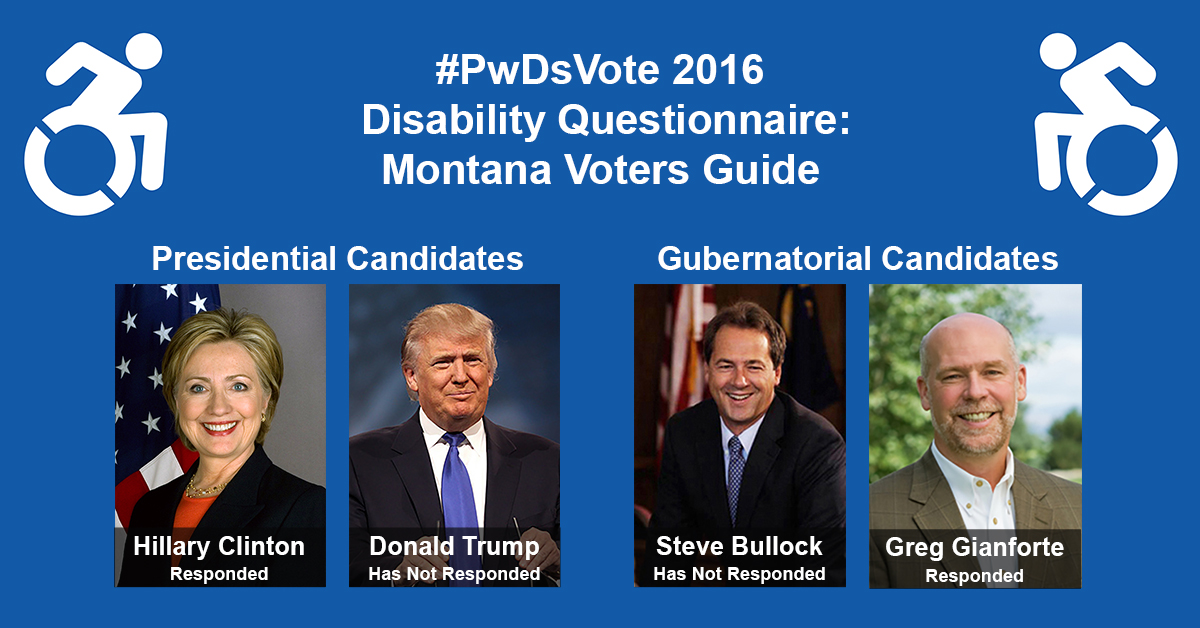

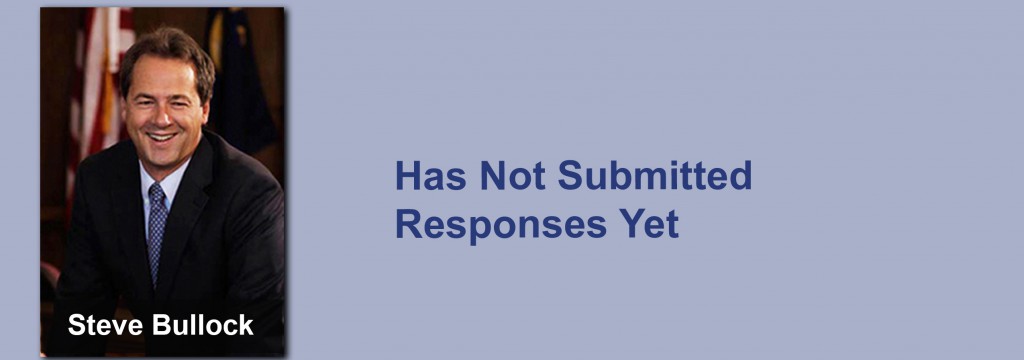
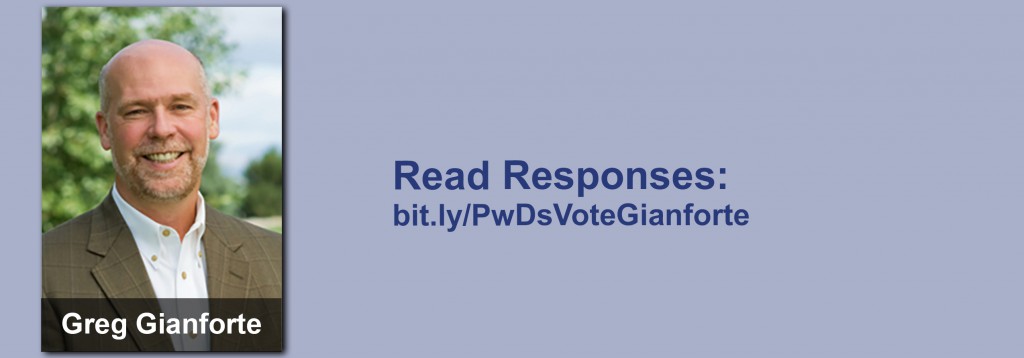
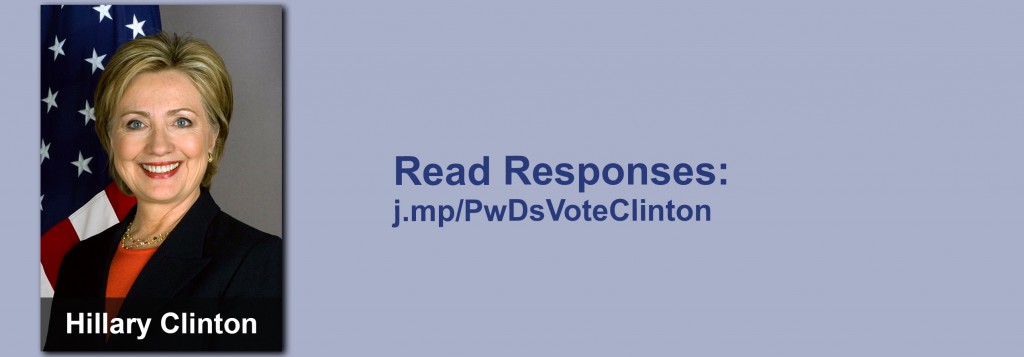
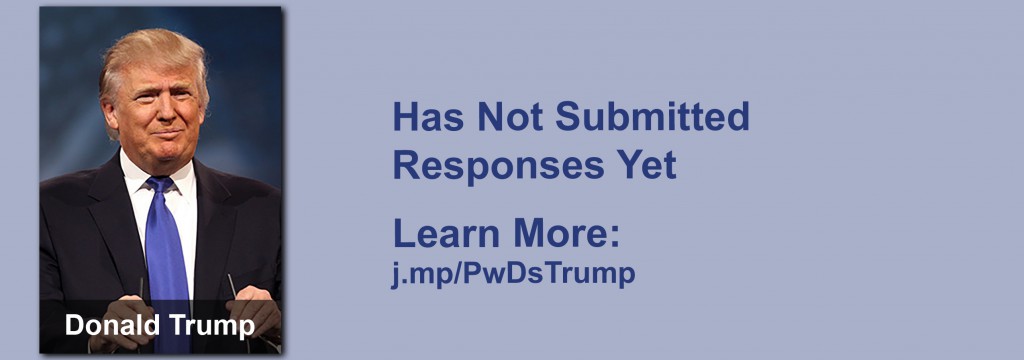

Be First to Comment